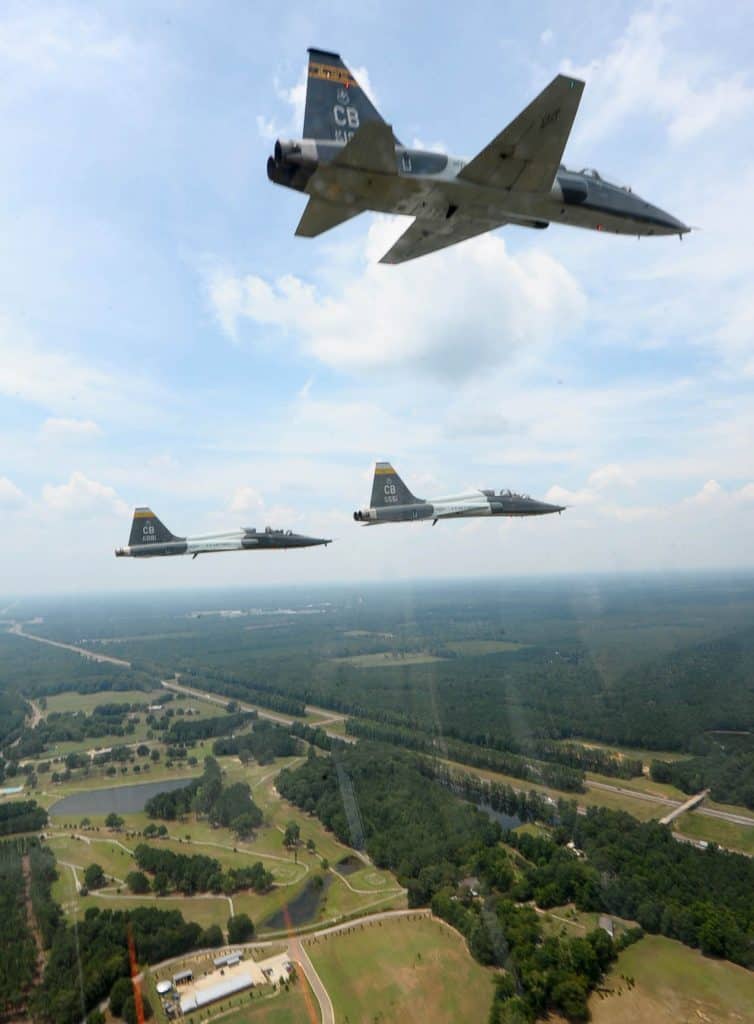Air Force vs Air National Guard: UPT Application Process (Part 1: Active Duty)

Although the prerequisites for attending Air Force Undergraduate Pilot Training (UPT) are virtually identical, the process of attaining a pilot training slot is one of the biggest differences between the active duty Air Force and Air National Guard (ANG).
Disclaimer - This is intended to be a big picture comparison of the most common paths to UPT. There are always exceptions or the inevitable “I know a cousin of a friend of a friend who did it a different way” scenarios. Use this guide as a general comparison as opposed to a detailed analysis.
Overview
The Air Force determines how many pilot slots are available each year and then divides those slots among the different commissioning sources. For example, there may be 1,200 pilot slots available in a given year with around 9,000 applicants. Of those 1,200 slots, the Air Force Academy (USAFA) will get the most, followed by the Air Force ROTC (AFROTC), and then the Air Force Officer Training School (OTS).
With both the USAFA and AFROTC, you won’t know if you’ve been selected for UPT until a few years into the program (at least your junior year of college). If you’re dead set on attending pilot training, that can be a long and grueling wait without any guarantees.
On the other hand, if you get selected for UPT through the OTS, you will know before your first day of officer training. However, there are far fewer UPT slots available through the OTS. It may take several application attempts until you’re selected.
The Three Main Active Duty Paths to UPT
1. Air Force Academy (USAFA)
Preselected for UPT: No
Location: Colorado Springs, CO
Duration: 4 years
The USAFA is easily the most intense option for earning a commission, but it also yields the highest statistical probability of getting selected for UPT. Simply getting selected to attend “the Academy” can be a significant challenge in itself; getting in requires not only acceptance from the school, which has extremely high academic standards, but also a congressional recommendation!
Roughly 1,100 cadets attend the Academy every year. Each semester, you will be graded on three main areas: academics, military bearing, and physical performance. You will be given a “GPA” for each of these categories which ultimately determines your Air Officer Commanding (AOC) rank order among your peers. The AOC rankings, ordered from first to last, determine what assignments each cadet gets when they graduate.
Assignment Night, also known as “100th Night” (100 nights until graduation), occurs during your senior year. Other than graduation itself, this is probably the most exciting night at the Academy because it reveals your fate after nearly four years of intense military and academic training. Approximately 50% of USAFA graduates will be selected for UPT.
While your chances of getting to UPT are statistically higher, this path isn’t for everyone. Four years of constant military training, along with giving up many of the social freedoms that your friends enjoy at traditional universities, can be a hard pill to swallow for some—and all of this comes without any guarantee of UPT at the end.
2. Air Force Reserve Officers’ Training Corps (AFROTC)
Preselected for UPT: No
Location: Any college or university that has an AFROTC program
Duration: 2-4 years
If you’re seeking your UPT slot through the AFROTC, you will need to be enrolled full-time in a college or university with an AFROTC program and commissioned by your 29th birthday. Selections for UPT won’t occur until the spring term of your junior year (approximately 15 months prior to your commissioning).
A selection board at the AFROTC Headquarters will rank all of the applicants nationally based on each candidate’s “Order of Merit” rating. This rating is attained from an algorithm that assigns different levels of importance to the following:







